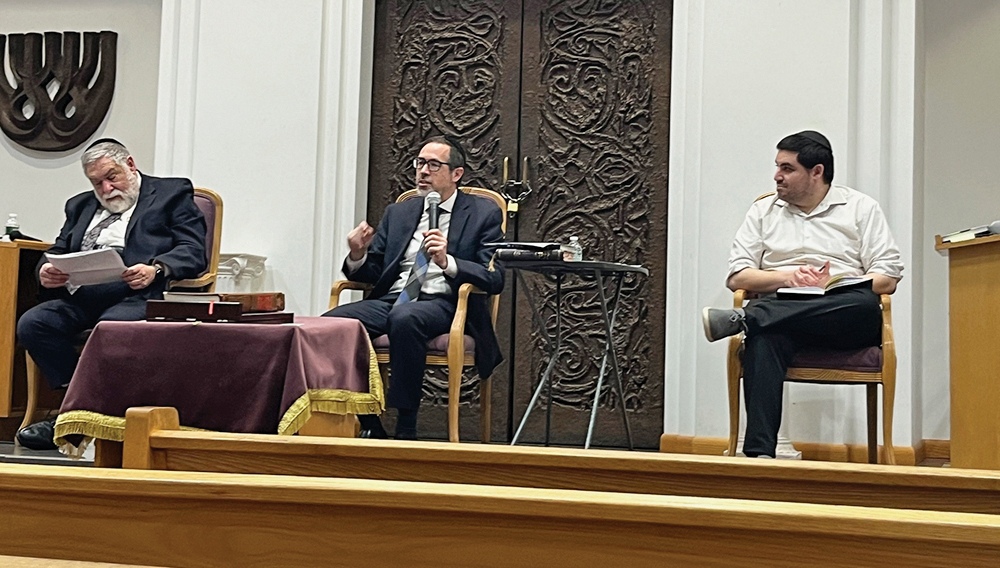Gittin 3b, 86 and b
This article is intended as a general background on gittin. For any practical questions regarding gittin, please consult your posek.
“When a man marries a woman …, if she is displeasing to him or if he has evidence of sexual misconduct on her part, he shall write her a bill of divorce and place it in her hand, thus releasing her from his household. When she thus leaves his household, she may go and marry another man.”
According to the Rambam, this verse sets forth the 10 requirements for a valid גט, get, a bill of divorce. If any of these 10 requirements are absent and the woman marries another man, based on the deficient get, the consequences are dire. The woman is still considered to be married to the husband that gave her the deficient get and the children of her subsequent “marriage” have the personal status of ממזרים, mamzerim.
This means that such children, through no fault of their own, are severely limited in finding a spouse of their choice. The Halacha permits a mamzer to marry only a person with the same status or a convert to Judaism.
Accordingly, those who are not fully conversant with the laws of gittin should not conduct divorce ceremonies. This should be left to the experts in this area of Halacha.
The 10 Torah requirements for a kosher get are:
1) The get must be given by the husband of his own free will (according to Torah law there is no requirement that the wife accept the get of her own free will, although today, following the decree of Rabbeinu Gershon in the first century, this is required).
2) The divorce is ineffective unless it is in writing.
3) The get must recite that the husband has divorced his wife and has removed her from his domain.
4) The get must have the effect of severing the marital bond.
5) The get must be written for the particular woman being divorced and with her in mind.
6) No act, such as the cutting of parchment, may intercede between the writing of the get and its delivery to the wife.
7) The get must be delivered to the wife.
8) The delivery must take place in front of two witnesses.
9) When delivering the get the husband must say “this is your get.”
10) The get must be delivered to the wife by the husband himself or an agent that he appointed for the delivery.
Although the Torah requires the get to be delivered in front of two witnesses, the Torah, according to the Rambam, does not require the witnesses to sign the get. Yet, today, two witnesses are required to sign the get. What is the purpose of their signatures?
According to Rabbi Meir, the signatures of two witnesses on the get are a Torah requirement and if the woman remarries, relying on a get that is not signed by witnesses, the children are mamzerim.
According to Rabbi Eliezer the Torah does not require witnesses to sign the get. The Torah only requires that the get be delivered to the wife in the presence of witnesses. The absence of the witnesses’ signature on the get does not render the children mamzerim. The Halacha adopts the opinion of Rabbi Eliezer.
So, according to Rabbi Eliezer and the Halacha, why do we insist today that witnesses sign the get? The answer is that although there is no Torah requirement to sign the get, the rabbis require it for reasons of public policy.
The signature of the witnesses on the get provides evidence that the get was delivered in the presence of witnesses. Accordingly, if the ex-husband were ever to challenge the veracity of the get after the witnesses to the delivery died or were otherwise unavailable to testify, their signatures would provide evidence of proper delivery.
Indeed, according to some opinions, if the witnesses sign the get, it is effective even if there were no witnesses to the delivery of the get. Others maintain that irrespective of whether witnesses sign the get or not, witnesses to the delivery must always be present. According to Tosafot, if the husband delivered the signed get to his wife with nobody present, the get is ineffective and the children of the wife’s subsequent marriage will be mamzerim.
If, according to Rabbi Eliezer, as explained by Tosafot, the delivery of the get in front of witnesses is crucial to its effectiveness, why don’t the witnesses write alongside their signatures that they are witnesses to the delivery of the get? Why must this be presumed from the presence of their signatures?
The Terumat Hadeshen explains that this has to do with the way we conduct the get ceremony today. At the end of the ceremony, after the get has been delivered to the woman, she returns it to the beit din. The beit din then rips the get and files the torn get in the beit din archives.
Three reasons are given for this. First, this is done so that the woman should not be able to collect her ketubah money twice. Second, this is done so that the husband should have no opportunity to challenge the get after the ceremony. Third, this is done because it is a custom that has survived from the days when certain countries forbade Jews to conduct gittin ceremonies.
In any event, explains the Terumat Hadeshen, the woman does not keep the get and therefore, even if the witnesses would write on the get that they witnessed the delivery, this would no longer help the woman. Indeed, according to the Terumat Hadeshen, under these circumstances, according to Rabbi Eliezer, there is no need for the witnesses to sign at all. The only reason they do sign is to fulfill the requirement of Rabbi Meir, in view of the fact that the Halacha mostly follows the opinion of Rabbi Meir.
The practice today in America is that after the tearing of the get, the beit din issues the woman a divorce certificate, signed by the witnesses who confirm in writing that the get was delivered in their presence.
Raphael Grunfeld, a partner at the Wall Street law firm of Carter Ledyard & Milburn LLP, received Semichah in Yoreh Yoreh from Mesivtha Tifereth Jerusalem of America and in Yadin Yadin from Harav Haga’on Dovid Feinstein, Zt”l. This article is an extract from Raphael’s book “Ner Eyal: A Guide to Seder Nashim, Nezikin, Kodashim, Taharot and Zerai’m” available for purchase at www.amazon.com/dp/057816731X or by e-mailing Raphael at [email protected].











